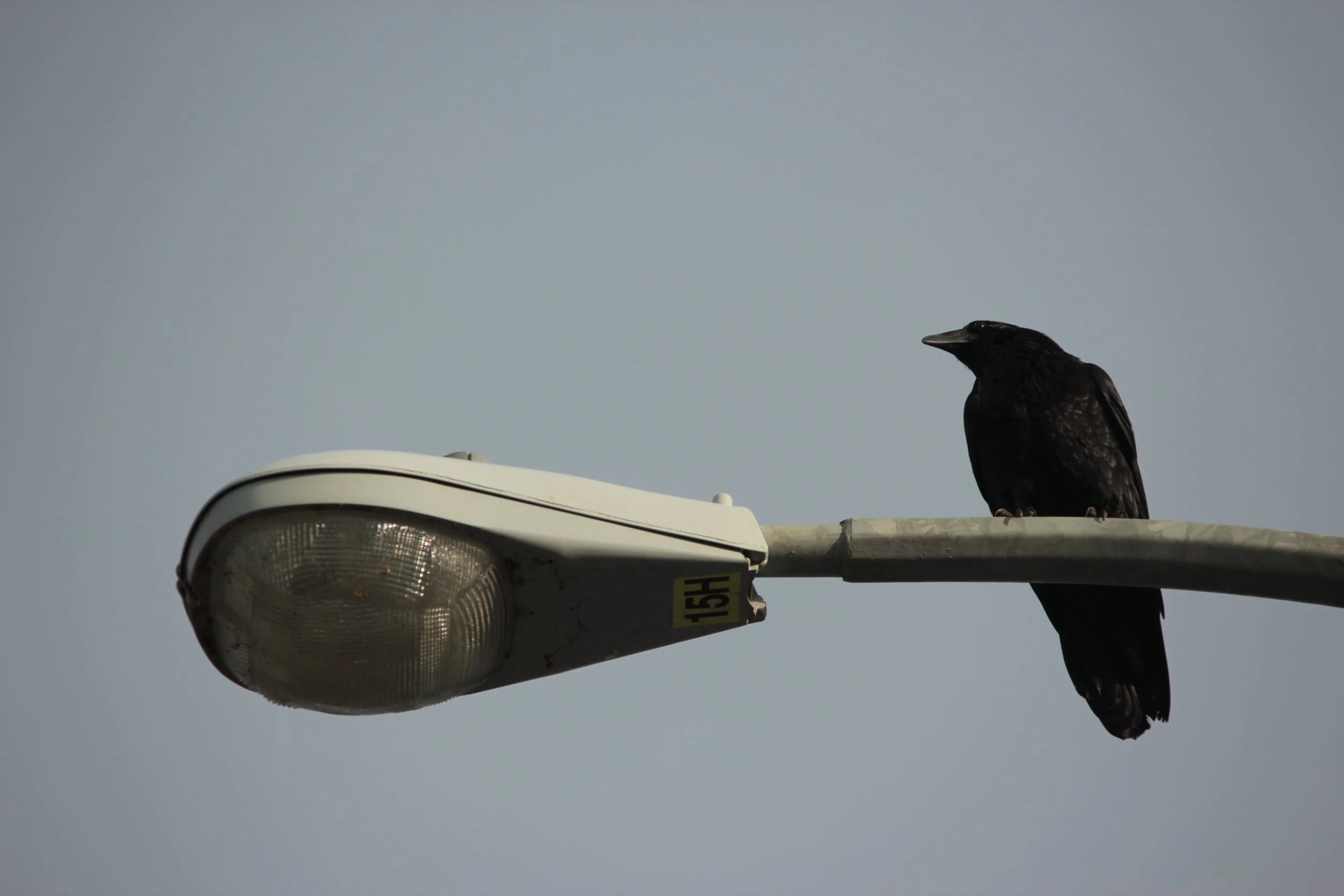
North of Fort McMurray 2015. A raven sits on a lamppost in Northern Alberta. Highly intelligent, these birds do well around humans and industries due to how strong their sense of survival is and how well adapted they are to all conditions.

North of Fort McMurray, 2015. The untold story behind Alberta's transient workforce is the drugs that made it possible to maintain a lifestyle that was transient and debatable. As suppression of voices was a condition to guarantee survival, many people relied on healthcare and illegal substances to enjoy their once high-paying roles.

North of Fort McMurray, 2015. One of the most difficult parts about growing up near a boreal wetland is the amount of disrespect a cold ecosystem gets. Either chemical runoff from nearby refinery, or something in the environment, to find the source of containments in a rough and hard to access area is beyond difficult, especially in winter. If you were to look, it would be that hard to see, even if it was bad.
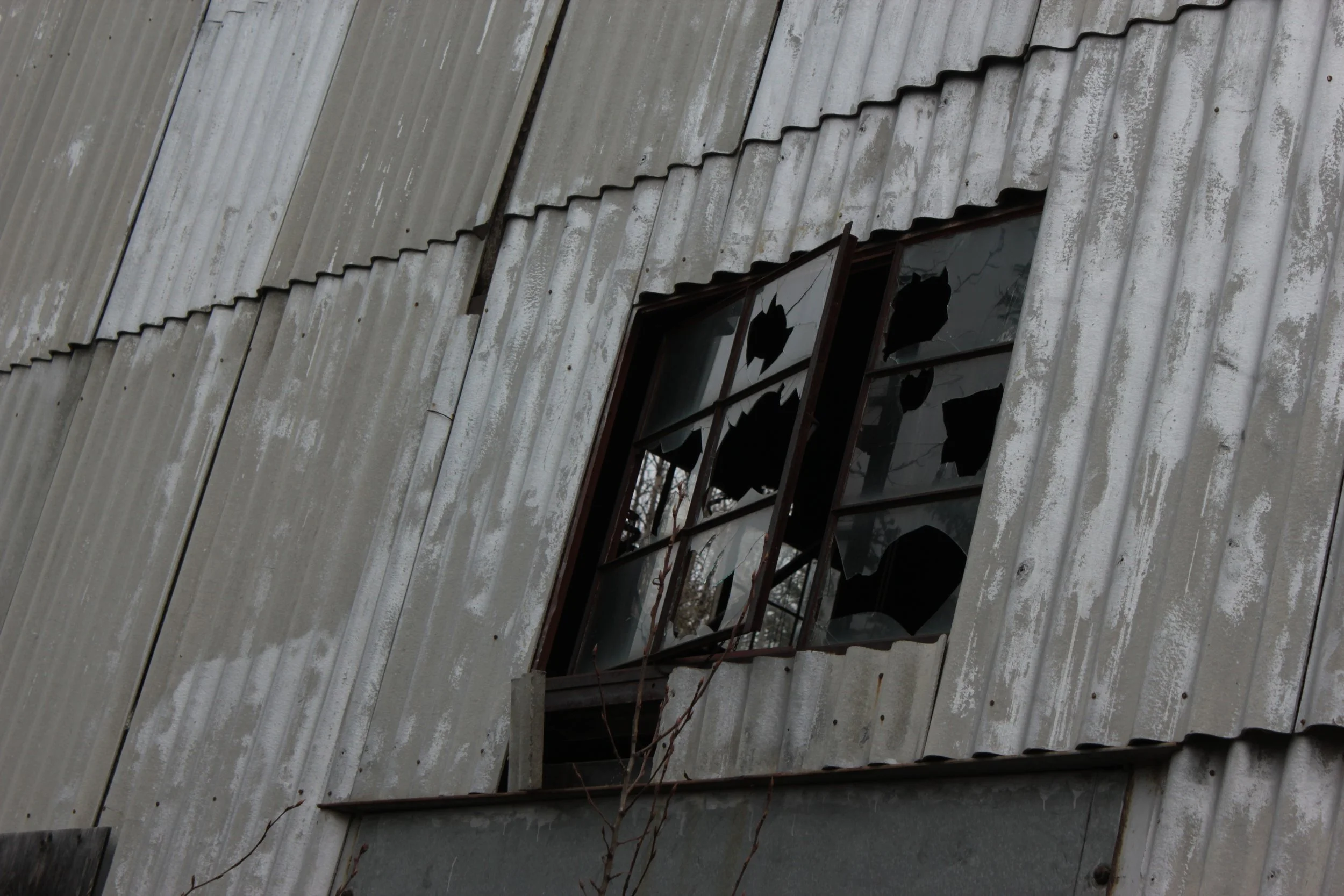
North of Fort McMurray, 2015. One of the distinct trademarks of life close to heavy industry is necessity is portrayed on the outside world. Most people raised around these areas have no choice but to have it in their blood, and like all people, the way they view themselves is only in places they can be themselves. The state of their historical objects says everything about how the world views them and their role.
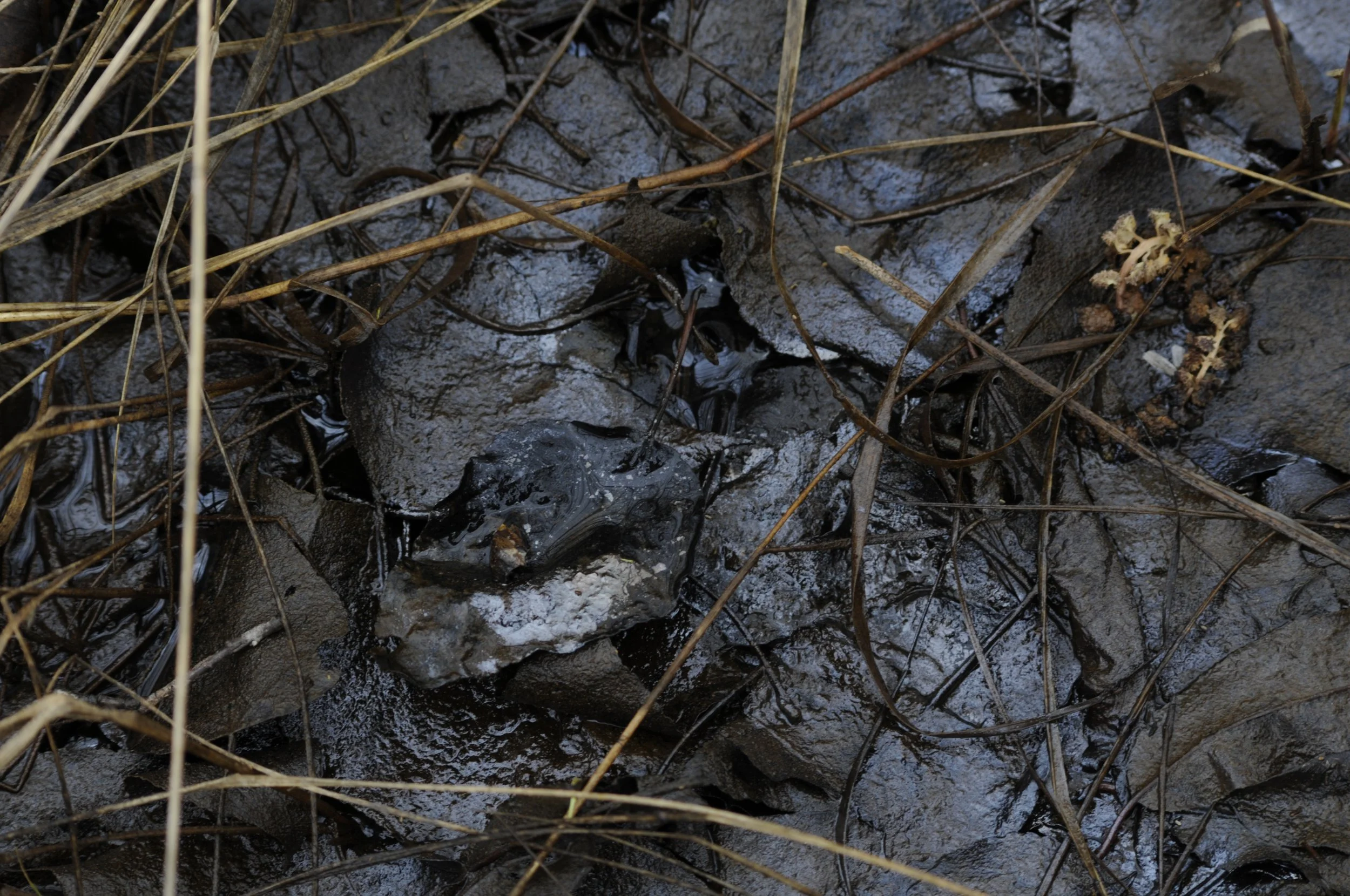
North of Fort McMurray, 2015. The most striking aspect of this project was the sound of equipment in a vast and open area. Without being able to show this, the memory of how little sound there would be if it wasn't for the industry was the opposite of controversial- it was sad like the reality that our opinion on exists in places like the city and nowhere near the actual resource deposits our country was set up to depend on.

North of Fort McMurray, 2015. When water mixes with the bitumen, the results of centuries of carbon deposits, it creates a serious problem for the water table. When we were growing up, word of mouth would report issues with the fish population and cancers in the wildlife. Unfortunately, due to heaviness of this type of deposit, the results could be slow, building up over time.

North of Fort McMurray, 2015. The color behind these photographs speak to how easy it is to get used to the result of industry over time. As a smelly, rustic environment to begin with, it is common for resource centers to get familiar their pollution (which can smell like you were tarring your roof for kilometers), to the point they forget that they are damaging the environment as much as they are.

North of Fort McMurray, 2015. As Alberta is well known for it's seemingly barren and boring biodiversity which holds a lot of migratory birds for the arctic, the controversy surrounding how to maintain these resource plans had many local environmentalists in a deep state of concern that their mining would go too fast to have a real answer after, especially if nobody was up there to see it.
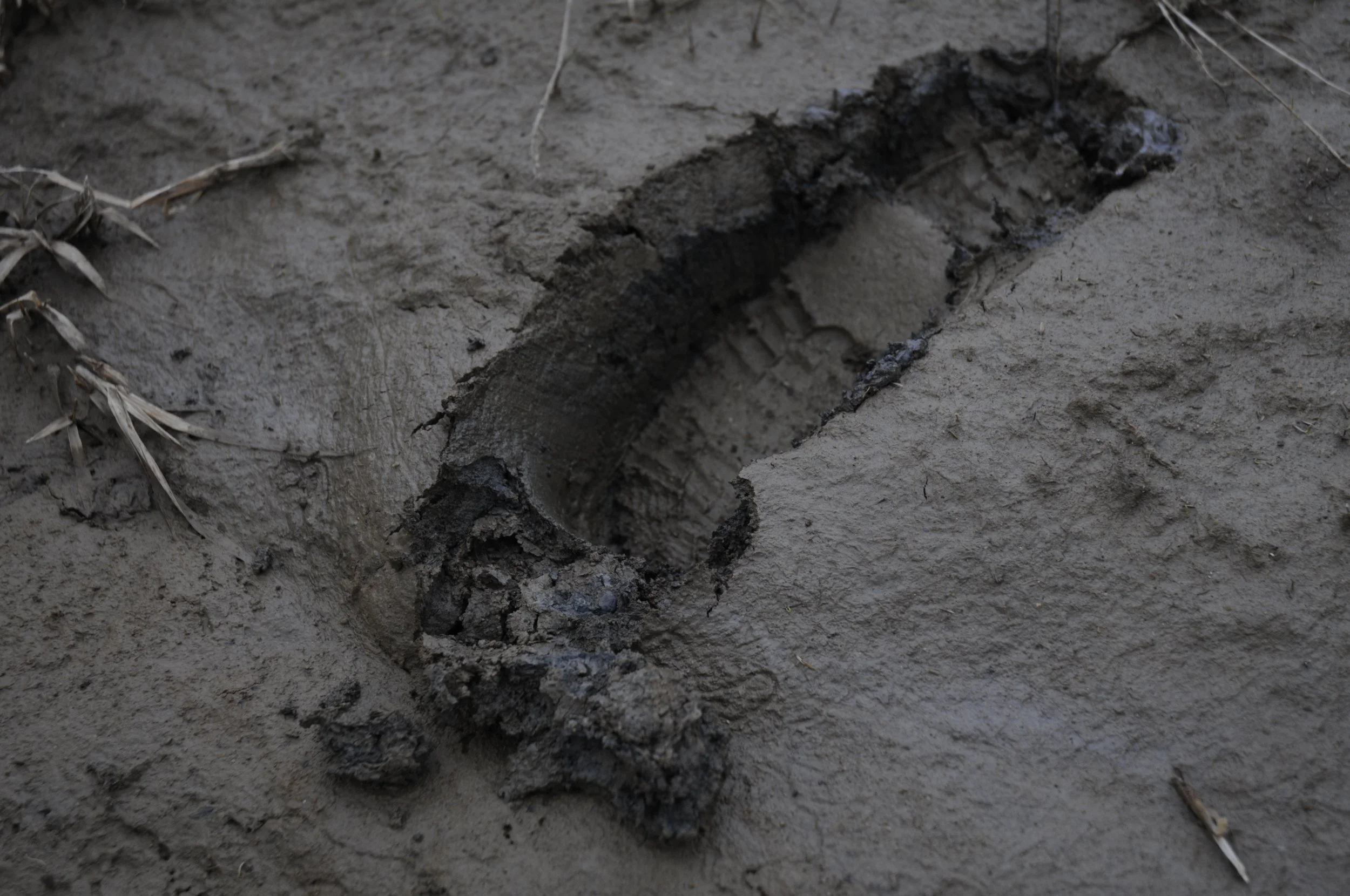
North of Fort McMurray, 2015. The truth behind resource development vrs people is so deep, all industrial countries deal with it. As a still beautiful and healthy, Canada's next fifty years has a make or break on how it would prefer to enable the planet. As endless resources come from such a big country, things like water, wood and intellectual capital seem like ammo for a globe looking to self destruct.

North of Fort McMurray, 2015. History in Canada is fleeting and changing, hard to catch. Those who grew up to see the changing populations and incoming interests globally would have witnessed history. The people who lived in these work dorms were important, a must for Canadians to remember the changes in our generation are part of who we are and what we do, especially at it's worse.

North of Fort McMurray, 2015. The silver sheen on this puddle tells the story of a world made out of grey- the color of how we live our lives. If you were to take a sample, and put this next to another area without industry, the results could be amazing. This type of tinge defines those who grow up like this, that in their souls there's a deep understanding of reality.

North of Fort McMurray, 2015. If we weren't interested in the role our lives have on other places, then the tiny tragedies we would miss would never be told. However, an environmentalist's concern cannot override attention to detail, because in most cases, a little goes a long way as soon as the right problem is targeted and not a another person's emotional reaction.
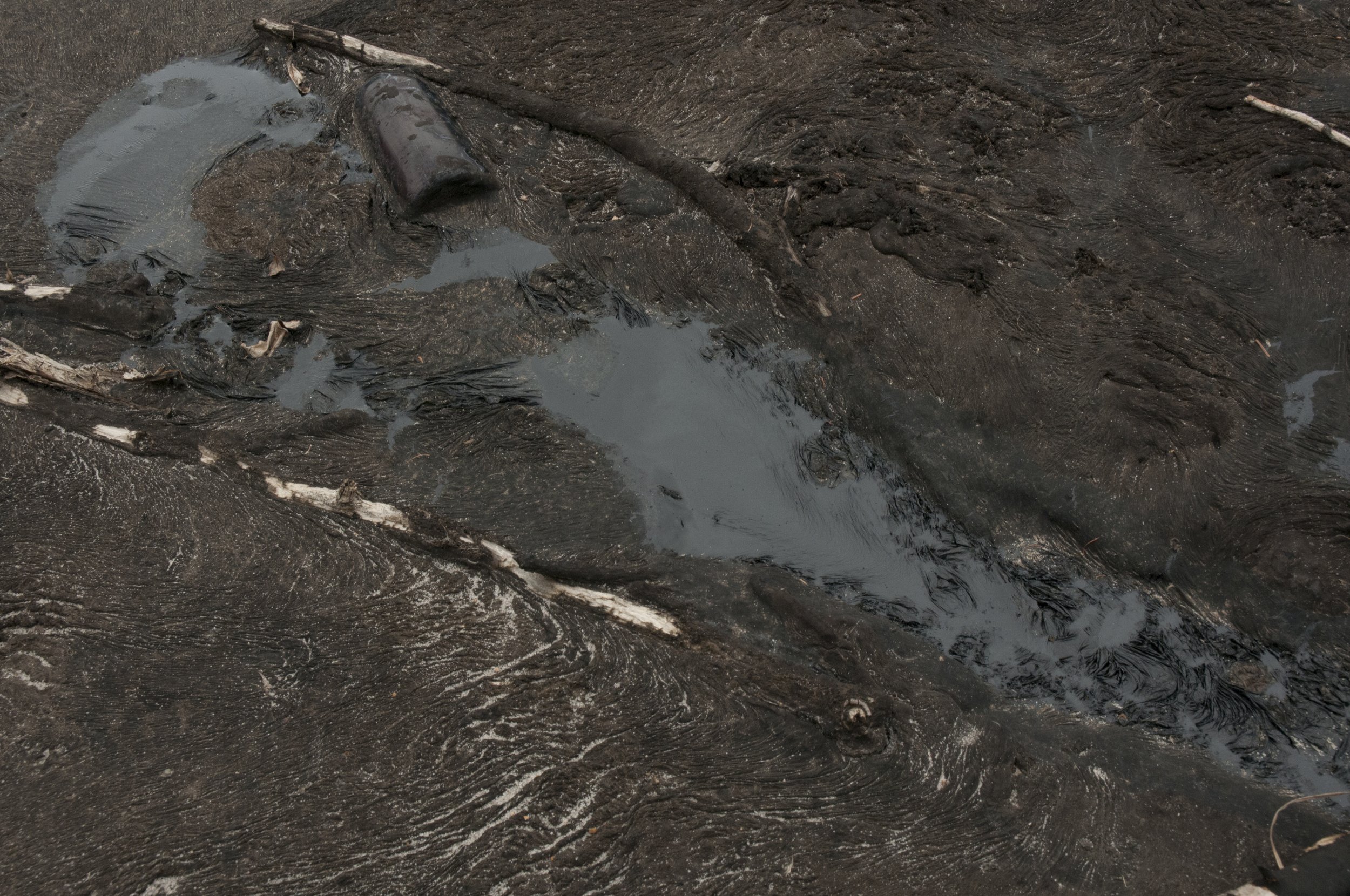
North of Fort McMurray, 2015. This picture of bitumen is the result of one of the first experiments with a way of extracting oil without the traditional wells that were discovered sooner. Local business people as small as ranchers tried this technology that used steam to prolong Alberta's energy industry and make anybody rich. Would that be an opportunity today, or do those hey days belong to different sectors now?

North of Fort McMurray, 2015. The fear of water concerns for Canada are so distant that we are spoiled to grow up in our generation without it. With our southern cousin's dealing with it for two decades now, we must take notice that we may be exploited once again, as human need is a hard thing to defend our country against. As much as oil is a concern, that could easily switch to water with the same logistics.

North of Fort McMurray, 2015. Reforms are our generations next step. Older millennial remember the honesty of the 1990's recycle movement and how true their family seemed. With cataclysmic problems defining the last twenty years, our lives seem to want to remember how much time we had. What if we did though? Would another try actually do it though with better information and harder training methods or are we destined to be the same?

Government Building, 2015. The typo in this sign comes from a .Generation ago. Those who remember it, knew a smaller country that was colder and from a different era. Around the end of the cold war, places like Alberta were experimenting with new technology involving satellites and infrastructure. They would have put in their ideas for resource development then. Today, we reconsider, but without knowing, will it work?

The boreal forest, like other northern places are misleading in that not all the trees are fast growing. Forestry practices can make it seem easy, despite what it does to the streams and ecosystems. What is missed is that a natural forest and a replanted forest can be between centuries of webbing organisms to decades of similar plants put together, looking the same to an untrained eye.

North of Fort McMurray, 2015. The dissent made real by corrupt practices in this central Ft. McMurray apartment complex speaks to how much money from the area left, and how over burdened the municipalities were with demand for labor and wages. As much as it was an opportunity for positive, the amount of greed it entailed left a population bitter and resentful, with almost nowhere to go with what could have never entailed them to begin with.

North of Fort McMurray, 2015. The pride in a job was what was at the heart of Alberta for decades. Today, the post Covid-19 world offers a different complex between going to resources and changing for the planets future. Those in the middle of their lives are at a loss for who they are and what will drive their families next. Tech offers just as many controversies, and without the skill set to manage safety, what will their futures be?
Ft. McMurray 2015
Photo essay on environmental degradation North of Ft. McMurray during the 2001-2015 Alberta oil boom. This project was self funded to explore the controversy behind the oil industry and it's impact on artists and the environment. It's aim was to show audiences the portrayal of oil exploration in a northern wetland, most of it involving bitumen and oil mining. At the time it was highly controversial to question the industries behind these photos, and anybody's attempt to look into it was highly censored and difficult. Nowadays, 2024, these photos are a reminder of how little it takes to tell a quiet story that about the truth behind our actions. This was my first independent photography project, right on the eve of the Alberta NDP majority win which eventually ousted the Conservative Party which had a stranglehold on Alberta politics for forty years. All Photos Kathryn Dutchak, 2015.